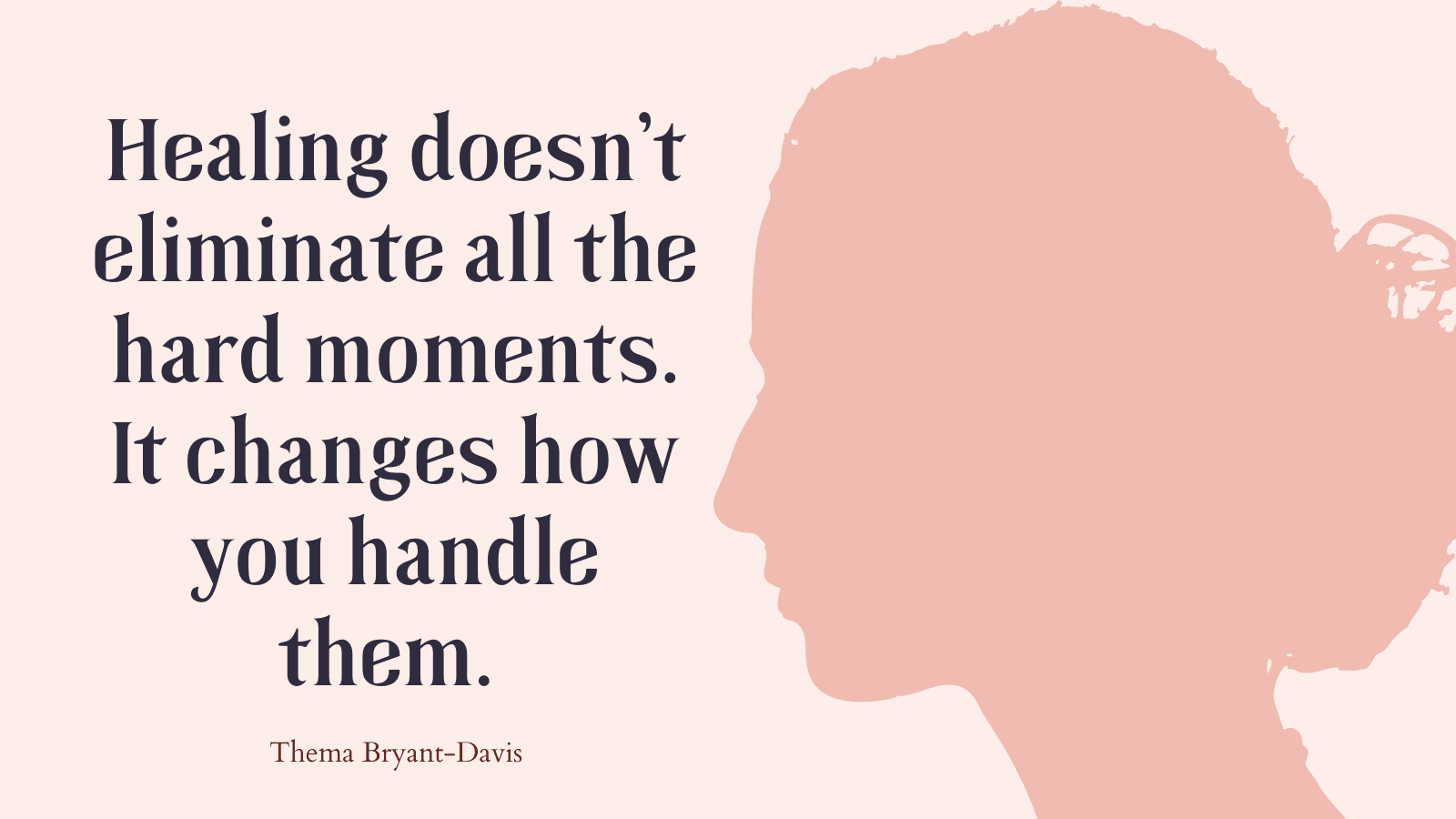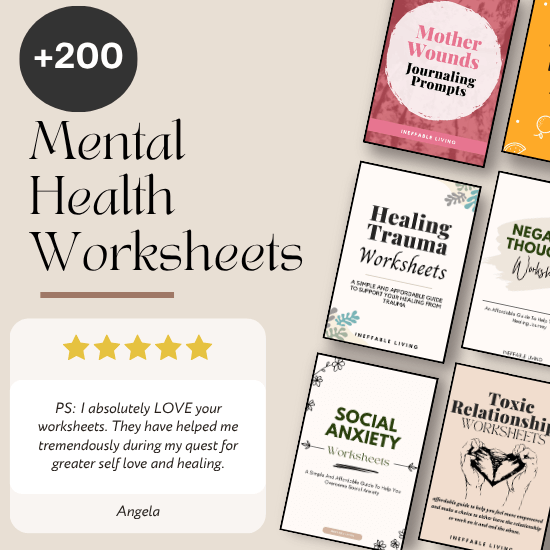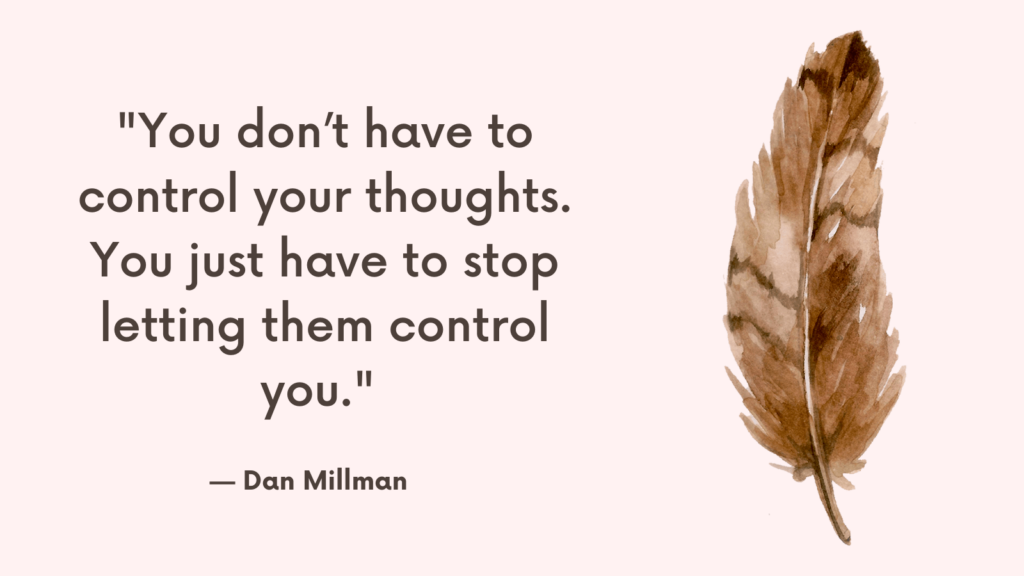Today, you’re going to learn all about CBT For Anger and how to use Cognitive Behavioral Therapy exercises for anger management.
Anger is the emotion we feel when we experience injustice or have our goals blocked.
Anger has an unnecessarily bad reputation, mainly, because it is often associated with violence (lashing out physically or verbally)
But emotions are distinctly separate from behaviors.
You may want to express your anger by lashing out, but you don’t have to. There are other healthier ways to express anger.
In the same way, just because you feel scared, doesn’t mean you have to avoid the thing you are scared of.
In other words,
- Anger is a normal and healthy response to many situations.
- Anger can be managed and used in a way that is healthy and effective.
What is Cognitive Behavioral Therapy?
Cognitive behavioral therapy (CBT) is an evidence-based treatment approach.
CBT helps effectively treat a range of problems including depression, anxiety disorders, alcohol and drug use problems, marital problems, eating disorders, anger issues, and other mental illnesses.
CBT is based on the following principle: “Psychological problems are based, in part, on unhelpful ways of thinking and learned patterns of unhelpful behavior.”
Therefore, people can relieve their symptoms by changing their thoughts and behaviors. (source)
Anger: A Misunderstood Emotion
Anger can be a major contributing factor in destroying relationships, property damage, substance abuse, legal troubles, and other negative consequences.
But the problem isn’t anger itself, but what you do with that anger.
Can Anger Be Used In A Positive Way?
Anger serves a purpose. It can motivate people to solve problems, confront injustice, and create meaningful social change.
Three benefits of anger
Anger alerts you to injustice or someone or something blocking your goals.
Anger motivates you to confront injustice.
Anger communicates your status to others.
When Anger Becomes A Problem?
Anger becomes counter-productive when it doesn’t inspire you to take effective action.
For example, sitting in a car in a traffic jam day in and day out without taking action to change that situation (taking another route, leaving home earlier, changing working hours, using the time to listen to an audiobook, etc) can negatively impact your physical, psychological, and emotional well-being.
Anger becomes a problem also when:
- You regularly express it in unhelpful or destructive ways
- It affects your physical and psychological well-being
- Prevents you from communicating effectively with other people
Why Getting Angry Less Often Isn’t The Solution?
Looking at the consequences of “acting” on anger, many people assume that the solution to maladaptive or problematic anger would be to get angry less often.
You might have been told that, “Life’s too short to be angry,” or, “You just need to relax,” which could be true for some people.
But for many people, the problem isn’t about getting angry less, but how to handle their anger and make different decisions about how they express anger.
Anger Management: It’s More Than Deep Breathing
Most people view anger management as staying in control and working your way out of it through deep breathing.
While anger management does include calming exercises, it can also include much more than that.
Components of Anger
Every emotion is made up of three different components: physical, cognitive, and behavioral.
Becoming mindful of each component can help you recognize anger earlier and manage it more effectively. (*)
Physical component
What does anger feel like in your body? The following are some common physical sensations that may apply for you:
- Racing heart
- Shallow breathing
- Tightness in the chest
- Muscle tension
- Dry mouth
- Clenched teeth
- Feeling flushed in the face
- Increased perspiration or sweating
- Clenched fists
- Tunnel vision
Cognitive component
What kind of thoughts and interpretations do you have while experiencing feelings of anger? The following are some common thoughts:
- This isn’t fair.
- He shouldn’t have done that.
- This shouldn’t have happened.
- What a jerk!
- This is wrong.
- Everyone is against me.
Behavioral component
What types of things do you tend to say or do when you feel anger? The following are some common action urges:
- Standing up for yourself
- Asserting your needs
- Confronting someone
- Picking a fight
- Raising your voice
- Screaming
- Throwing something
- Punching or hitting something
- Hurting yourself
What Are The Common Triggers For Anger?
The triggers for anger can vary greatly from person to person, as everyone has unique experiences, sensitivities, and personal boundaries.
However, there are some common triggers that tend to provoke anger reactions in many individuals. Here are a few examples:
1. Frustration: When we encounter obstacles or challenges that impede our progress or prevent us from achieving our desired goals, it can lead to feelings of frustration and subsequently, anger.
2. Injustice: Witnessing or experiencing unfair treatment, discrimination, or perceived injustices can evoke strong anger reactions.
3. Betrayal: Being lied to, deceived, or betrayed by someone we trust can trigger intense anger and feelings of hurt.
4. Disrespect: Feeling disrespected, belittled, or humiliated by others can elicit anger responses as it challenges our sense of self-worth and dignity.
5. Threats to personal safety or boundaries: Any situation where we feel threatened, physically or emotionally, can trigger anger as a protective response.
6. Traffic and daily hassles: Mundane, day-to-day frustrations like being stuck in traffic, dealing with long queues, or facing repetitive annoyances can accumulate and lead to anger outbursts.
7. Financial stress: Money-related issues such as financial instability, debt, or loss can create significant stress and provoke anger reactions.
It’s important to recognize that these triggers are not universal, and what may anger one person might not affect another in the same way.
Identifying and understanding our unique anger triggers can help us develop strategies to manage and cope with anger more effectively.
Related: Assertive Anger: What It Is & How to Practice It
Top 14 CBT Anger Management Exercises
#1. Reinforce Your Decision to Change
At times it might seem like other people are the problem. If they could just stop being so annoying, you wouldn’t be so angry.
Resisting change is the rule, not the exception.
That’s why you need to reinforce your decision to change by considering all of the reasons why your life would be better if you could free yourself from anger.
Practical Exercise – Consider the Pros and Cons of Anger-Related Behavior
1. Identify the pros and cons of how you currently manage anger, how you express it, and how it affects your life.
For example:
Pros: It makes me feel powerful
Cons: It is hurting my relationships
If you tend to experience a lot of angry outbursts, consider the impact of these on your health and relationships.
If you don’t act out in anger, but feel angry most of the time, consider the impact that chronic anger has on your life.
2. Identify the pros and cons of working on your anger
For example:
Pros: I would feel better about myself
Cons: It is a lot of work and practice
After writing down the list of pros and cons, rate each item on a scale from 1 to 5 based on its effect on your life and compare totals.
Keep the lists where you can see them regularly.
#2. Making a Commitment to Change
When you commit to change, you consciously choose to take action that is in line with your values and goals, despite having destructive urges.
There are different ways to increase your commitment:
1. Take action steps
Action steps might involve searching for techniques you can apply to manage your anger, making an appointment with a therapist or counselor, talking about it with your partner, or a friend, keeping track of your anger (behavior, triggers, etc).
2. Talk about your commitment
Studies (Lokhorst et al. 2013) have found that people are much more likely to sustain public commitments than private commitments.
Committing publicly can involve talking with a close friend or loved one about the steps you’re willing to take, committing to your therapist to do anger-management homework, make specific commitments with someone else who is also working on anger.
#3. Practice Mindfulness
Mindfulness involves learning to pay attention to what you are experiencing at the present moment.
Many people believe that mindfulness means meditation or is related to a religion or spiritual practice. But that’s not true.
You don’t need to sit and meditate for hours to benefit from mindfulness.
Mindfulness is about being aware of what is happening in the moment.
Mindfulness can help you recognize the first signs of anger and help you control it before it becomes overwhelming.
Practical Exercise – Mindfully Attending to Your Anger
Find a comfortable and quiet place where you can sit or lie down.
Close your eyes and focus on your breath. Notice what it feels like to breathe in and out and which parts of your body move as you breathe.
Think about an experience that triggered your anger recently. Choose an experience of a moderate level, when your anger was around a 4 or 5 on a scale from 0 to 10.
As you focus on the experience, pay close attention to your body sensations.
Once you have finished scanning your body, focus your attention on the parts of your body where you feel anger.
If you find yourself judging the situation, notice that judgment and bring your attention back to noticing the sensations as just sensations.
Focus on noticing any urges your anger triggers and keep focusing on the different components of your emotion without trying to escape or avoid, change, or push them away.
Do this for about ten to fifteen minutes, or until the emotion subsides and you no longer feel angry.
#4. Recognize Your Role
Facing your emotions and asking yourself “What might I have done to contribute to this?” requires a level of self-reflection and honesty that is difficult for many people.
Anger is a social emotion that we usually feel in the context of an interaction with another person. So it’s important to consider how something we said or did (even unintentionally) may have influenced the situation.
This is what’s called “evocation”: the act of unintentionally triggering predictable reactions in others.
For example, someone who approaches people expecting them to be rude, will be rude first, and unintentionally elicit rudeness in response.
This suggests that oftentimes, we unintentionally contribute to the social situations that we find ourselves in.
You might think, “Wouldn’t considering how I’m partly responsible make me feel worse?”
While it’s true that feelings of guilt may emerge, recognizing your role in these situations can be empowering – it’s one thing you can control.
Practical Exercise – Reflecting on an Angry Incident
Revisit an angry incident you had recently and try to answer the following questions:
1. What injustice did you experience that your anger was alerting you to? Were you treated poorly, unfairly, or otherwise wronged?
2. If you didn’t experience injustice, was someone or something blocking your goals?
3. What was the experience of anger like in your body? Did these physical sensations help or hurt you in responding to the injustice?
4. How did you express that anger both verbally and nonverbally (posture, facial expressions, tone of voice)?
5. What might you have done to contribute to this situation?
#5. Prevent Triggering States
Perhaps you recognize that you tend to become anxious under stress, or snap when you’re tired or hungry.
Identifying what triggers your anger can help you prevent unwanted anger.
Reminding yourself that “This feels worse because I am tired,” can help you calm down much more quickly.
Some of these states might seem obvious. Most people are more likely to get angry when they’re sleep-deprived, under stress, tired, running late, experiencing physical pain, or hungry.
But there are other situations specific to you that can make you more likely to get angry, such as specific memories, specific people or actions.
Practical Exercise – Manage Pre-Anger States
Come up with a list of states that tend to exacerbate anger. This list could involve:
Take steps to prevent these situations.
For example, if you’re going to have a busy day at work, make sure you get enough sleep the night before, eat a healthy breakfast, and leave the house earlier.
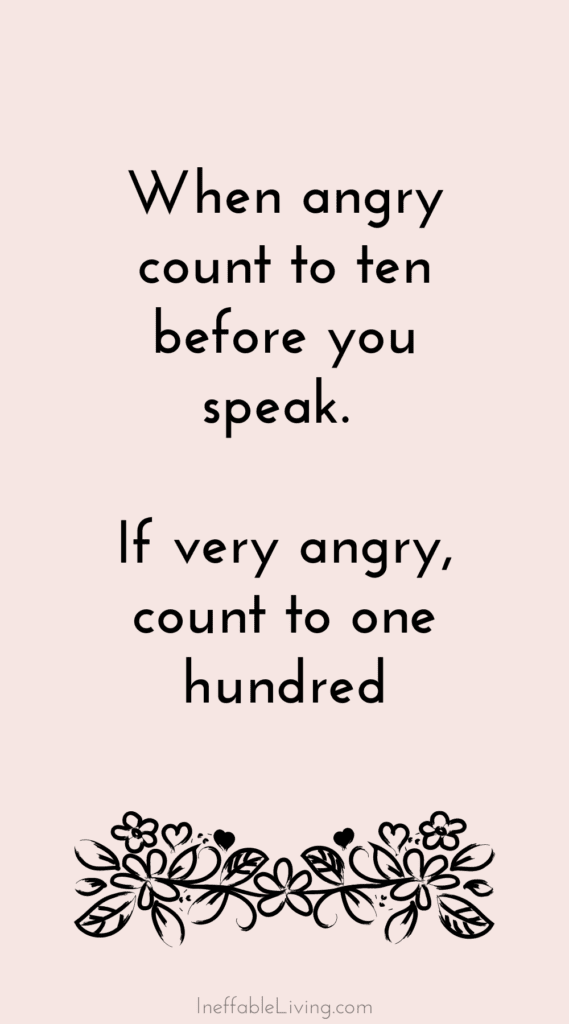
#6. Identifying the Cues for Your Anger
Triggering states aren’t the only factor in experiencing anger.
Some situations or experiences may bring up anger for you, too.
When identifying the cues for your anger, make sure you describe them objectively without labeling or judging them.
For example, when someone says something hurtful to you, instead of saying “He is a jerk,” you’d say, “My dad told me he doesn’t approve of my job.”
Evaluations and judgments would only add fuel to the fire. When you objectively describe the situation your anger reaction can subside.
Practical Exercise – Identifying Your Cues for Anger
Knowing the types of situations and experiences that tend to trigger your anger is an important first step in learning to manage your anger – It’s easier to manage what’s predictable.
Write down a list of cues that trigger your anger.
Think about times you experienced anger recently and what situation or experience that brought up anger for you.
The following are some common cues for anger:
- Being told no
- Driving in traffic
- Waiting in line
- Having someone disagree with you
- Being insulted
- Not having your opinions or wishes taken into account
- Observing people mistreating animals or children
#7. Identify Your Appraisal Tendencies
This will help you manage your anger better, but also understand more about yourself, how you might have fueled your anger, and how you can prevent that.
Appraisal tendencies include the following thinking patterns:
- Catastrophizing (“This is going to suck”),
- Inflammatory labeling (“How stupid can someone be?”),
- Overgeneralizing (“Why do these things always happen to me?”).
- Fortune-Telling (“I have so much to do. I’m going to be behind in my work”)
These cognitive distortions can fuel your anger and even cause it in the first place.
Practical Exercise – Identify Your Core Values and Beliefs That Drive Your Anger
1. Identify the different types of situations that trigger your anger. Try to come up with some specific examples of situations and for persistent a pattern there.
2. Identify your interpretations you tend to have during these situations (catastrophizing, inflammatory labeling, fortune-telling, overgeneralizing, etc)
3. Reflect on what this appraisal tendency says about you? (If you tend to labeling people negatively, does that reflect a general attitude of contempt?)
4. Consider your appraisal tendency when examining future incidents.
5. Practice positive reappraisal by reinterpreting the same event in a more positive light.
Read More: When Your Brain Lies to You: How to Stop Cognitive Distortions and Overcome Depression?
#8. Avoid or Change Anger-Provoking Situations
Oftentimes, we can choose what provocations we experience. We make choices about who we interact with and how we interact with them. And these choices influence how we feel.
For example, someone who participates in political debates on social media and gets angry arguing with other people is making a choice to do that.
That isn’t to say that we should avoid any conversation that will make us angry or uncomfortable. There are conversations we need to have, people we need to interact with and avoiding these will negatively impact our lives and limit them.
The key here is to weigh the pros and cons.
Practical Exercise – Manage Provocations
Each time you’re about to get into a situation or a conversation that you know will trigger your anger, ask yourself,
“Is it worth it?”
“Will this conversation solve a problem or enrich my life in any way?”
If you decide that the situation isn’t worth it, come up with a plan for avoiding it or limiting your exposure to it.
For example, if driving in heavy traffic tends to make you angry, think of ways you can avoid heavy traffic.
- Can you take a less congested route to work?
- Can you change your work schedule so you don’t have to drive during rush hour?
- Can you take public transportation instead?

#9. Increase Self-Efficacy
One of the functions of anger is to provide a sense of control. So the more life feels out of control, the more likely you are to get angry.
Therefore, doing things that make you feel competent and incontrol helps you feel good about yourself and makes you less reactive to everyday hassles, thus reducing your vulnerability to intense anger.
- So make a to-do list and start crossing things off your list.
- Do something you’ve been avoiding and that will move you toward your goals
- Do something you are good at
#10. Crisis Survival Skills
One of the biggest problems with anger is that it is often accompanied by the destructive urges.
Crisis survival skills are designed to help you avoid acting on these urges. These skills include:
- Leaving the situation
- Distracting yourself
- Getting your mind busy
- Creating strong sensations
- Releasing the energy related to anger
- Thinking Through The Disadvantages Of Acting On Angry Impulses
1. Leave the Situation
Leaving the situation can be the easiest way to avoid making things worse and calm yourself down.
This could mean walking away from the situation.
However, when another person is involved, how you leave will depend on your relationship with the person and how much they know about your struggles with anger.
If the person is a close friend or family member who is aware that you’re working on your anger, you can let them know that you need some space.
If you don’t know the person well, you may say that you need to use the restroom or take a phone call.
Sometimes it might be better to leave a situation abruptly than to act on urges to do something destructive.
Leaving the situation is only the first step. What you do after leaving the situation is just as important.
2. Distract Yourself
Focusing your attention on something else will keep you from retriggering your anger by ruminating on it and give it time to subside.
Do something. You can choose almost any activity as long as it is stimulating.
Choose an outdoor activity. When you’re outdoors, you’re surrounded by all kinds of things that can capture your attention, (temperature and feel of the air, sounds you hear, sights around you, things you smell).
3. Get your mind busy
Give your mind something else to focus on.
Make your mind work. Count backwards, starting at zero and keep adding seven until you exceed one hundred, do a word game, play a challenging game on your phone, try to come up with the name of an animal or a city that starts with each letter of the alphabet, etc.
Think about something else. A positive experience you’ve had, something that made you laugh, your pet, or someone you love, what you need to do in the coming week, etc.
4. Create Strong Sensations
Create a sensation that is so powerful or strong that you can’t help but focus on it.
Taste. Suck on a lemon, suck on candy with a very strong flavor, bite into a raw jalapeño pepper, etc.
Smell. Spray strongly scented perfume, open a bottle of vinegar and breathe deeply. Some people find that unpleasant smells are more distracting than pleasant ones.
Touch. Hold a piece of ice in your hand until it melts, take a cold shower.
Sound. Listen to loud music that is upbeat or happy, blow a whistle.
Sight. Focus on an image that really captures your attention with vibrant colors and strong lines.
5. Release The Energy Related To Anger
Activities that are physically demanding, such as aerobics, hiking, or swimming, help burn off some of the energy that goes along with feelings of anger.
6. Think Through The Disadvantages Of Acting On Angry Impulses
Controlling angry impulses can be so difficult for many people because expressing anger can be satisfying and provide a sense of release in the moment.
That’s why focusing on the long-term, destructive effect of reacting out of anger can help you better manage your anger.
These consequences might include:
- Increased conflict and damaged relationships
- Hurting other people’s feelings
- Increased feelings of guilt and shame
- Loss of a job or loss of a promotion or raise
- Etc.
#11. Reducing Physical Sensations Associated With Anger
Anger is made up of three different components (physical, cognitive, behavioral).
Modifying one of these components can change the experience of your anger.
Reducing physical sensations that come along with anger, such as shallow breathing, muscle tension, hot flushes, and rapid heart rate can help your anger subside as well.
1. Deep Breathing
Deep breathing helps you control your anger by reducing several of the physical sensations associated with anger, such as shallow breathing, muscle tension, and rapid heart rate.
A great thing about learning this skill is that you can use it any time or any place.
So how do you know if you’re breathing properly?
Take a few minutes to notice the parts of your body that move as you breathe.
If your belly is expanding when you breathe in and contract when you breathe out, then you are breathing properly.
If, on the other hand, your shoulders move up and down as you breathe, you might not be breathing properly. Using our chest and shoulders to breathe doesn’t allow enough room for the lungs to expand, which results in short and shallow breaths.
Practical Exercise – Learning How to Breathe Deeply
1. Sit up in a chair with your back straight.
2. Place one hand on your stomach and the other hand on your chest.
3. Take a breath in and deliberately push your belly out and let your belly fall when you breathe out.
4. Continue to breathe in and out counting to five each time, then try to lengthen your breaths.
5. Keep practicing this breathing exercise until it becomes a habit.
2. Slowing Your Breathing
This is similar to deep breathing, but instead of focusing on your belly and breathing more deeply, this skill focuses on breathing out more slowly than you breathe in and then gradually lengthening your out-breath.
An added benefit of this skill is that counting the length of each out-breath can distract you from whatever triggered your anger.
3. Progressive Muscle Relaxation
Progressive muscle relaxation (PMR) involves tensing and then relaxing your body’s muscles.
This can help reduce the muscle tension that goes along with anger.
The reason why this skill involves tensing your muscles before relaxing them, is that relaxing muscles on command doesn’t tend to work.
But if you deliberately tense your muscles first, relaxing them can be much easier.
Practical Exercise – Practicing Progressive Muscle Relaxation
1. Get into a comfortable position.
2. Choose one body part and bring your full attention to that part. You can start with the tips of your toes and work your way to your head.
3. If you choose your forearms, make fists with your hands and squeeze to about 70 percent of your maximum strength for about five to ten seconds and then release and relax your muscles.
4. Repeat this process for the rest of your body parts and notice any differences in sensations between the tense and relaxed muscles.
4. Lower Your Body Temperature
Your body heats up when you experience anger.
Therefore, lowering your body temperature can help reduce your anger and make it more manageable.
There are many ways to lower your body temperature:
- Take a cold shower.
- Hold an ice pack on your cheeks, wrists, or the back of your neck.
- Dunk your face in a bowl of cold water.
#12. Express Your Anger In Healthier Ways
Research found that the catharsis theory of aggression fuels anger rather than decreasing it. (1)
Groups that were encouraged to release their anger through punching bags, or hitting nails with hammers, become angrier. On the other hand, other groups that were encouraged to practice deep breathing or listening to music, became much calmer.
At the same time, anger suppression was found to be correlated with negative health and interpersonal consequences, such as cardiovascular disorders and alienating friends, family, and coworkers. (2)
Express Your Anger Effectively
These things have all been shown to help decrease feelings of anger:
- Practice breathing exercises from your diaphragm
- Try meditation
- Seek social support (Talk through your feelings)
- Use positive self-talk (Repeat mantras like “It’s going to be okay,” or, “Relax,” or, “Take it easy.”)
- Try to gain a different perspective by putting yourself in the other person’s shoes rather than focusing solely on your anger
- Learn to assert yourself, expressing your feelings calmly without becoming defensive or emotionally charged.
- Anger Management Therapy or Counseling: Seek help from a professional therapist to learn how to use assertiveness and anger management skills.
#13. Reality Acceptance Skills
Acknowledging and accepting things as they are can help you reduce suffering.
Anger can serve a purpose: it propels us to take action to change whatever is making us angry.
However, when what’s making you angry cannot be fixed in the moment, fighting your anger can just make it worse.
Acceptance doesn’t mean you like the feeling or you want it to stay. It just means that you no longer fight it, that you acknowledge it, and can direct your energy and time to think of an effective action to take.
For example, if someone says something hurtful to you, refusing to accept that it happened and ruminating about will likely make you angrier.
On the other hand, when accept that this person said something hurtful, you’re more likely to think clearly about the situation and take effective action.
#14. Anger Communication
1. Identify your goals
When it comes to expressing anger, you need to figure out what exactly do you want the other person to do or say?
You might want the other person to treat you more respectfully, or set emotional boundaries.
2. Plan ahead for difficult conversations
Think about what points you want to make, how you are going to convey them, and how the other person may react.
3. Practice “When X happened, I felt Y” statements
Instead of saying “You made me feel,” try using “I statements” and convey facts.
4. Maintain professionalism
Stay calm. Avoid name-calling and try not to become defensive.
5. Make sure to listen too
Listen and pay attention to what they have to say, too. Try to put yourself in their shoes to gain a different perspective.
6. Take a break if you need one
If you find yourself getting agitated, ask if it’s okay to take a break before you continue the conversation.
Read More: How to Be More Effective in Relationships (Effective Communication)
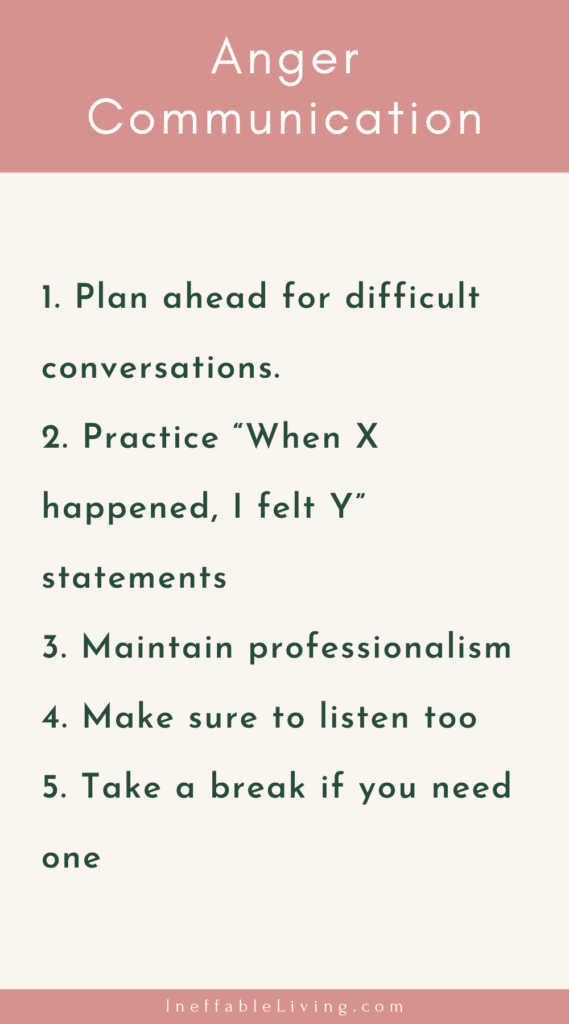
Conclusion
Anger is an important emotion.
It can help us protect ourselves, fight injustice, and confront those who are mistreating us.
However, anger can also be incredibly frustrating and a major roadblock, getting in the way of our lives, relationships.
That is why you need to learn how to control it and use it effectively.
FAQ
Is Anger a Mental Illness?
The Diagnostic and Statistical Manual of Mental Disorders, fifth edition (American Psychiatric Association 2013), doesn’t include an “anger disorder.”
However, anger is a feature of many mental disorders, such as borderline personality disorder (BPD), post-traumatic stress disorder (PTSD), mania (a symptom of bipolar disorder), oppositional defiant disorder, conduct disorder, and others.
Depression and grief can also be accompanied by feelings of anger.
Are Anger and Aggression Related?
A lot of people associate anger with aggression, and while the two can be related, they’re not the same thing.
Aggression involves actions or statements that can harm someone or something.
Anger, on the other hand, is an emotional state.
You can feel very angry, but not act aggressively.
Similarly, people can act aggressively when they’re not even angry, such as protesters who may smash and break windows or insult police, and worse, all while laughing and jumping around.
How can anger affect our physical health?
Anger, when not properly managed, can have significant effects on our physical health.
Research suggests that experiencing intense or chronic anger can contribute to various health issues.
Here are some ways anger can impact our physical well-being:
1. Increased heart rate and blood pressure: When we are angry, our bodies release stress hormones like adrenaline, which can lead to an increased heart rate and elevated blood pressure. Prolonged periods of anger can put a strain on our cardiovascular system, potentially leading to heart problems.
2. Weakened immune system: Frequent anger and unresolved anger can weaken our immune system’s ability to fight off infections and illnesses. This can make us more susceptible to conditions such as colds, flu, and other diseases.
3. Digestive problems: Anger can also manifest physically through digestive issues like stomachaches, acid reflux, and even irritable bowel syndrome (IBS). The tension caused by anger can disrupt the normal functioning of our digestive system.
4. Headaches and migraines: Anger can trigger headaches, tension headaches, and migraines due to the increased muscle tension and heightened arousal associated with anger. The severity and frequency of these headaches can vary from person to person.
5. Sleep disturbances: Unresolved anger can interfere with our sleep patterns, resulting in difficulties falling asleep or staying asleep throughout the night. Lack of quality sleep can have numerous negative effects on our overall health and well-being.
6. Chronic pain: Some individuals may experience an exacerbation of pre-existing chronic pain conditions, such as back pain or muscle tension, when they are frequently angry or chronically angry. Anger can intensify the perception of pain.
It’s important to note that everyone may not experience these physical symptoms to the same degree, and individual differences exist in how anger manifests physically.
Additionally, the impact of anger on physical health can vary based on factors such as the intensity of anger, frequency of anger episodes, and an individual’s overall health status.
Related: Anger Iceberg: How to Use It (+FREE Anger Iceberg Worksheet PDF)
Is anger a learned behavior or an innate response?
Anger is considered to be a natural and innate emotional response that is hardwired into our biology.
It is a part of our evolutionary adaptation mechanisms and can be triggered when we perceive a threat, injustice, or frustration.
From an early age, infants display signs of anger when their needs are not met.
However, while anger itself is an innate response, how we express and manage our anger can be influenced by learned behaviors.
Our upbringing, cultural background, and social environment play a significant role in shaping how we understand and express anger.
We learn from our parents, siblings, peers, and society about what is considered acceptable or unacceptable anger expression.
Therefore, while the initial feeling of anger is instinctive, the way we learn to express it, control it, or channel it constructively is influenced by our learned behaviors and environmental factors.
Related: Best 10 Anger Management Books And Workbooks
Can anger be beneficial in any way?
While anger is typically viewed as a negative emotion, it can have some potential benefits when channeled and managed effectively. Here are a few ways anger might be beneficial:
1. Assertiveness: Expressing anger in a controlled and assertive manner can help establish boundaries, assert our needs, and communicate our feelings more effectively. It can empower us to stand up for ourselves and address situations that require change.
2. Problem-solving: Anger can sometimes serve as a motivator for finding solutions to difficult situations or conflicts. It can provide the necessary energy and determination to tackle challenges head-on and seek resolution.
3. Self-awareness: When we experience anger, it can provide us with valuable insights into our own emotions, values, and personal boundaries. Exploring the underlying causes of anger can foster self-reflection and self-awareness.
4. Social change: Historically, anger has played a role in driving social and political movements. Outrage and anger towards injustices have led individuals and communities to mobilize for positive societal change.
Related: Best 10 Anger Management Books And Workbooks
How can I differentiate between healthy and unhealthy anger?
It’s important to distinguish between healthy and unhealthy expressions of anger to promote emotional well-being and maintain healthy relationships. Here are some key differences:
Healthy anger:
– Is expressed in a controlled manner, without resorting to aggressive or violent behavior.
– Is proportional to the situation and not overly intense or prolonged.
– Is focused on addressing the issue at hand, rather than attacking the person involved.
– Allows for open and respectful communication, creating space for understanding and compromise.
– Is accompanied by empathy and an awareness of others’ perspectives.
Unhealthy anger:
– Involves aggressive, violent, or destructive behavior toward oneself or others.
– Is disproportionate to the situation, leading to excessive or prolonged anger reactions.
– Involves insults, personal attacks, or demeaning language when expressing anger.
– Hinders effective communication and escalates conflicts rather than resolving them.
– Is accompanied by a lack of empathy and an inability to consider others’ viewpoints.
What are some signs of uncontrolled anger?
Individuals experiencing uncontrolled anger may display various signs and symptoms. Here are some common indicators:
1. Frequent outbursts: Reacting to even minor triggers with intense anger outbursts that are disproportionate to the situation.
2. Physical aggression: Engaging in physically aggressive behavior, such as hitting objects or people, during episodes of anger.
3. Verbal aggression: Using verbal aggression, insults, or profanities when expressing anger towards others.
4. Risky behavior: Engaging in impulsive or reckless activities during moments of anger, disregarding potential consequences.
5. Chronic resentment: Holding grudges or harboring resentment for extended periods, often unable to let go of past anger-inducing events.
6. Difficulty calming down: Finding it challenging to calm down and regulate emotions after becoming angry, leading to prolonged periods of heightened arousal.
Related: Rational Detachment – What Is It and How to Cultivate it
How does anger impact our mental well-being?
Anger can significantly impact our mental well-being, both in the short term and over time. Here are some ways in which anger affects our psychological health:
1. Stress and anxiety: Anger activates the body’s stress response, triggering the release of stress hormones like cortisol. Prolonged exposure to high levels of stress hormones can contribute to chronic stress and anxiety disorders.
2. Depression: Unresolved or chronic anger can contribute to feelings of sadness, hopelessness, and depression. Anger turned inward can undermine self-esteem and lead to self-destructive thoughts and behaviors.
3. Interpersonal conflicts: Difficulty managing anger can strain relationships, leading to conflicts and social isolation. Confrontations arising from uncontrolled anger can damage important personal and professional connections.
4. Impaired decision making: When anger is intense, rational thinking and decision-making abilities can be impaired. Reactive and impulsive responses during anger episodes can lead to poor choices and regrettable actions.
5. Low self-esteem: Struggling with anger issues can negatively impact self-esteem, as individuals may feel a lack of control over their emotions and behavior. This can contribute to feelings of guilt, shame, and diminished self-worth.
Related: Top 7-Day Acceptance Challenge For A Peaceful Life
Is it normal to feel guilty after expressing anger?
Feeling guilty after expressing anger is a common experience for many individuals.
This guilt often stems from societal and cultural norms that discourage the open expression of anger.
Additionally, guilt may arise if anger is expressed in a way that violates personal values or results in harm to others.
It’s essential to recognize that feeling guilt does not necessarily mean that the expression of anger was inappropriate.
Exploring the underlying reasons for guilt and reflecting on the impact of one’s actions can help individuals find healthier ways to express and manage their anger.
What role does self-awareness play in anger management?
Self-awareness is a crucial component of anger management.
Developing an understanding of our own triggers, patterns, and emotional responses allows us to identify and address anger before it escalates.
By recognizing early signs of anger, such as physical sensations, thoughts, or changes in behavior, we can intervene and employ effective coping strategies.
Self-awareness also helps us gain insight into the root causes of our anger, enabling us to explore underlying emotions or unmet needs that may be driving the anger response.
Related: Best 6 Ways to Let Go of Wanting to Control Everything
Can unresolved anger lead to long-term psychological issues?
Unresolved anger has the potential to contribute to various long-term psychological issues.
When anger persists without resolution or appropriate expression, it can negatively impact mental well-being. Some potential psychological consequences of unresolved anger include:
1. Chronic stress: Sustained anger activates the body’s stress response, leading to prolonged periods of heightened arousal. This chronic stress can increase the risk of developing anxiety disorders, depression, and other stress-related conditions.
2. Relationship difficulties: Unresolved anger can strain relationships, leading to ongoing conflicts, resentment, and social isolation. It hinders effective communication and can erode trust and intimacy.
3. Self-esteem issues: Individuals struggling with unresolved anger may experience negative self-perception, low self-worth, and feelings of guilt or shame. These feelings can undermine self-esteem and contribute to an overall negative self-image.
4. Physical health problems: Prolonged anger can have adverse effects on physical health, including increased blood pressure, cardiovascular issues, and suppressed immune function.
Related: Circle of Control (+FREE Worksheet Download PDF)
Is there a connection between anger and substance abuse?
There is evidence of a correlation between anger and substance abuse.
Some individuals may turn to substances as a means of coping with or numbing their anger.
Conversely, substance abuse can impair impulse control and judgment, leading to a higher likelihood of aggressive behavior and anger outbursts.
Substance use can exacerbate anger-related issues and make it challenging to develop healthier coping strategies.
It is important to address both anger management and substance abuse simultaneously to effectively support individuals in their recovery journey.
FREE Anger Management Worksheets (PDF)
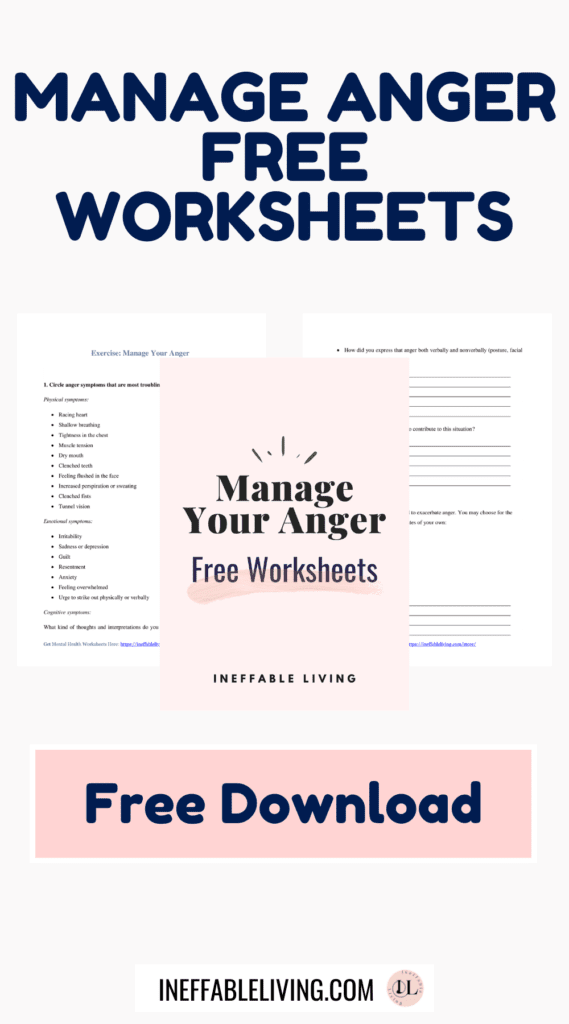
References
- Portions of this article were adapted from the book Why We Get Mad: How to Use Your Anger for Positive Change, © 2021 by Ryan Martin. All rights reserved.
- Portions of this article were adapted from the book The Dialectical Behavior Therapy Skills Workbook for Anger, © 2015 by Alexander L. Chapman and Kim L. Gratz. All rights reserved.
- Control anger before it controls you (apa.org)
- When is anger a problem? – Mind
- Anger Management – HelpGuide.org
- Get help with anger – NHS (www.nhs.uk)
- Anger as a Basic Emotion and Its Role in Personality Building and Pathological Growth: The Neuroscientific, Developmental and Clinical Perspectives – PMC (nih.gov)
- Anger as a Basic Emotion and Its Role in Personality Building and Pathological Growth: The Neuroscientific, Developmental and Clinical Perspectives – PMC (nih.gov)

